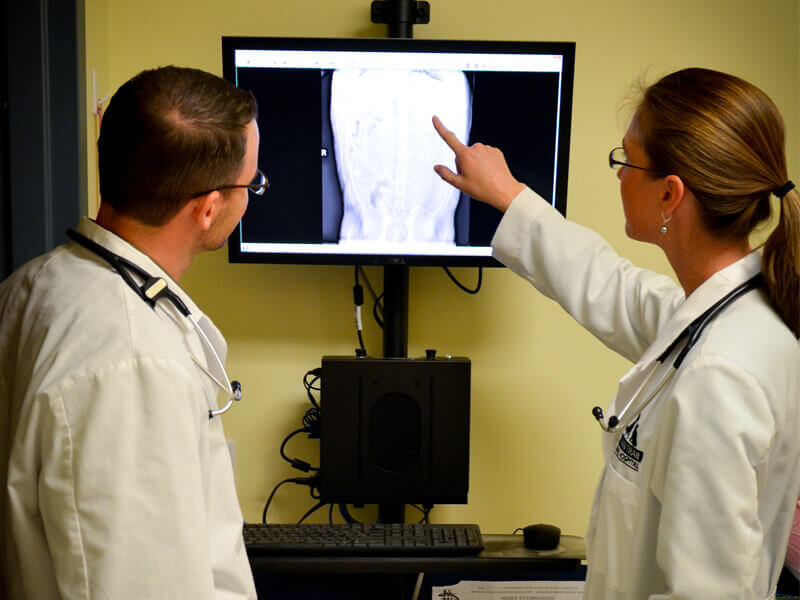 As technology leads us into the future and improves our lives, diagnostic imaging is no exception. Digital radiology gives our practice the ability to review and manipulate X-ray images in our office for the fastest information possible. This allows us to treat conditions faster and more effectively.
As technology leads us into the future and improves our lives, diagnostic imaging is no exception. Digital radiology gives our practice the ability to review and manipulate X-ray images in our office for the fastest information possible. This allows us to treat conditions faster and more effectively.
With today’s most current digital radiography, there is no lag time and no waiting for films to be processed at a separate lab. This means if the exposure is poor or if Fluffy moved a little bit, we can see the flaws immediately and retake the X-ray right then and there. In cases where a specialist consultation on the X-rays would be beneficial, we can send the digital X-rays to the radiologist electronically and typically have a report back within hours.
Like most digital images, our practice can easily enhance the digital X-ray image on the computer. We can zoom in or change the contrast and brightness for better viewing. Plus a digital x-ray technology creates a much clearer and detailed image than traditional X-rays. In identifying and analyzing changes of an ongoing condition that requires a series of images, our practice can utilize computer programs to assist us. An added bonus to digital radiology is the fact that it emits less radiation than traditional radiology.
Our practice has two types of digital radiology :
* Dental digital radiology allows our practice to view the internal anatomy of the teeth including the roots and surrounding bone. It isn't uncommon to find fractures or abscesses in the roots that the sedated oral exam didn't find.
* Standard digital radiology uses larger size digital x-rays to help us assess entire body parts like the chest, abdomen, or limbs. We can identify a fractured bone, or degeneration in a joint, as well as masses or foreign objects inside your pet’s body.
Our commitment to current technology benefits our clients and patients, and digital radiography is just one of many examples.
